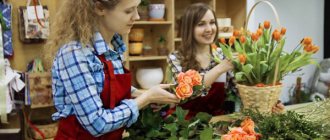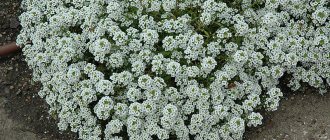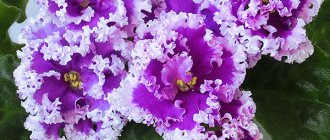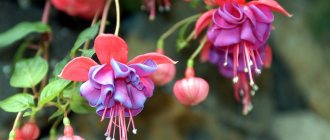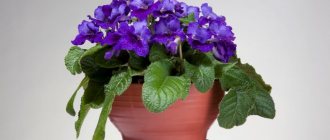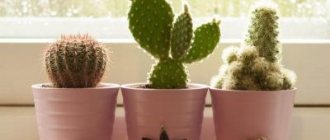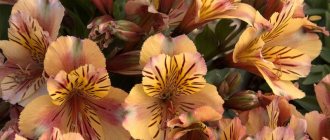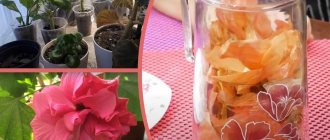Henry Ford said that the best job is a well-paid hobby. If you love nature, and ornamental plants are not just decoration for your garden and interior, then growing flowers in a greenhouse will be a profitable business that will bring joy and aesthetics to the world around you.
Is everything so simple for summer residents and businessmen who decide to start growing flowers for sale? Experience and expert information on how to open your own blooming and fragrant business is in our article today.
Growing flowers in a greenhouse: business features
So, we talked to experienced players in the flower business.
And they formulated the pros and cons of the direction. Advantages of the flower business:
- Low barrier to entry.
- High profitability.
- Stable demand, regardless of the time of year. During holiday periods it also increases tenfold.
There are also a lot of difficulties in the flower business. So, when starting to organize a business for growing flowers at home or on a specially purchased plot, it is worth remembering: each type of plant has its own requirements for soil composition, light level, and watering.
If at first you are going to grow flowers yourself, get ready for hard physical labor and a lot of time. You will have to sow, dive, water, loosen, control a dozen important parameters, from the saturation of the soil with moisture to the amount of carbon dioxide in the air. Of course, over time, most processes can be automated. But for this you will have to go through a difficult period of business formation.
If the listed difficulties have not shaken your faith in success and you still find growing flowers an attractive business, let’s move on to the important details.
What I did (calculations and stages of work)
To create the right assortment and enough flowers to sell, we had to spend money. First of all, I freed up space in the room for a 3-story flower rack.
Thanks to my husband, he made me a convenient rack from a metal rod and mesh as a gift. Now I could place about 50 additional plants.
To illuminate the plants on the shelves, I purchased 3 UNIEL phyto lamps, each 87 cm long. Their price in 2022 was 520 rubles per piece. Total 1560 rubles. These are the biggest but necessary expenses. Without lighting in the middle zone, it is impossible to obtain high-quality beautiful plants.
To transplant the shoots, I bought plastic pots with trays, priced from 16 to 25 rubles (depending on volume). Total for 570 rubles.
I purchased peat (a bag - 150 rubles) to make a soil mixture. I prepare the soil for my plants myself. I live in a rural area, so I have unlimited access to humus (dung, vegetable matter), sand, turf soil and pebbles for drainage, absolutely free.
I bought granular universal flower fertilizer OMU 5 kg for 370 rubles. Since 2022, I still haven’t completely spent these 5 kg, so it’s a profitable investment.
In total, my costs in monetary terms amounted to 2,650 rubles.
Having prepared the soil for the flowers, I planted those of my plants that required replanting and division into new pots. I managed:
- 15 shoots of Crassula;
- 8 ferns;
- 4 ficus;
- 10 violets;
- 4 spathiphyllums.
After giving the plants time to adapt after transplantation, I started selling. I photographed flowers on racks and individually, in good lighting and close-up. I placed advertisements in several places at once:
- in a local flea market group on a social network;
- on free Internet platforms (Avito, Yula);
- I posted paper advertisements near the market and near the school and kindergarten (parents often buy potted flowers as gifts for a group or class).
I immediately ruled out the possibility of taking flowers to the market, as it would be troublesome.
Important. I indicated the prices right away in the ad to eliminate unnecessary questions. I set the price at 40-50% of what I saw in the store for a similar plant. The ad immediately noted the possibility of a discount when purchasing multiple colors.
What flowers are profitable to grow?
If you have never worked on the land, there is a good option - to start a business by growing flowers at home: on the balcony or terrace of a private house. Most indoor plants in pots easily forgive mistakes in care, and the demand for them remains consistently high all year round. The easiest way to grow different varieties of geraniums, begonias, cacti, and succulents. Orchids, ficus and citrus fruits easily find their buyers.
For those who dream of a larger scale, it makes sense to immediately think about building a greenhouse. The fact is that it is most profitable to sell flower products in winter. Do not limit yourself to one type of plant, it is not economically feasible. Think about which families can easily get along with each other. There are many options:
- Violets.
The genus contains a huge number of different species. Moreover, all varieties are easily propagated using seeds and cuttings. Plants need regular watering, loosening the soil, applying fertilizers - filling with nitrate and superphosphate. Thanks to the wide color palette of flowers, violets are very popular among gardeners and casual buyers.
- Aster.
There are annual and perennial varieties, with inflorescence baskets of different colors and sizes. Growing these flowers as a business is also possible in open areas: Italian and Alpine aster readily bloom in the open air all spring, summer and part of autumn.
- Peonies.
They have become especially popular in recent years. Their lush buds look presentable both on their own and in combination with other flowers. In addition, peonies are stored for a long time in a cut state, which reduces the entrepreneur’s losses. At the same time, growing flowers is not easy: peonies require abundant watering, regular fertilizing, loosening the soil, and protection from weeds.
- Dahlias.
They love areas with good fertile soil. They reproduce by root tubers, seeds, and cuttings. They do not tolerate bright daylight well, so immediately after noon they need to be covered with special caps, removing the covers only early in the morning. Large bright inflorescences look good in prefabricated bouquets, setting the mood of the entire composition.
- Tulips.
Very popular and beautiful plants. The main secret to successfully growing these flowers in a greenhouse as a business is choosing the right bulbs. They should be large, dense, uniform in color. The bulbs are planted in the ground in December, after preheating the air in the greenhouse to +5 °C. After flowering, at the end of August, they are dug up and stored in the basement until winter.
- Daffodils.
The early spring flower is represented at our latitudes in 25 species. It is mainly white and yellow in color, but recently multi-colored varieties have been artificially bred. Daffodils cannot be planted in every area. The main requirement is soil that easily allows moisture and air to pass through. Loam with the addition of compost or humus is best suited.
- Roses.
Still out of competition. They symbolize luxury and wealth, and a bouquet of 101 flowers has long become an enduring trend. Roses are bred for sale mainly in greenhouse conditions. The fact is that plants in cultivation are very capricious and require increased attention. But after several years of practice, you can learn how to properly breed this species and make a good profit.
Growing flowers in a greenhouse, like every business, requires experience. Therefore, if you did not meet your expectations in the first year, this is not a reason to give up. Over time, you will learn to sense the needs of plants and optimize the process of sales and transportation. And you can earn great money.
Where to start growing indoor plants
You can get popular houseplants for free or for very little money. They are often given away during moves and renovations. They also share the children of the growing collection. It’s worth looking in regional groups like “I’ll give it away for free”, on Avito, Yula or Darudar.
It makes sense to start growing your own garden with simple specimens that do not require special conditions. This will allow you to practice plant growing, learn the principles of care and understand whether it is possible to turn your hobby into a business.
What you need to grow
A hobby does not require many resources and equipment. First of all, this is a place: a separate room, an insulated balcony or large window sills. It is convenient to use the simplest wooden and metal Ikea racks (from 700 rubles) to place pots and necessary equipment. For wintering succulents, cacti, certain types of orchids, and Venus flytraps, a glazed but cool balcony (average temperature +12-+15°C) is suitable.
Equipment
Equipment you need is a phytolamp, a humidifier and a hygrometer.
Some types of indoor plants require more light, while others need natural daylight. The same goes for humidity. Those with aerial roots, such as monstera or phalaenopsis, absorb moisture from the air. Therefore, it is necessary to monitor the optimal level of moisture. A hygrometer will help with this.
Priming
You will also need good soil, drainage and comfortable pots. The soil should be selected individually for each specimen. Some require a more nutritious substrate, while others can grow directly in the stones. Violet soil is not suitable for orchids, nor are pots. Expanded clay is used for drainage. It is placed at the bottom of the container. Drainage retains excess moisture and prevents roots from rotting.
As an alternative or more advanced option, Lechuza-pon substrate is used. It consists of porous materials, which allows it to retain water and release it gradually. Thanks to this, root rot does not occur. The average cost of a 6-liter pack is 900 rubles.
Substrate for indoor and potted plants Lechuza-pon
Another interesting option is the German Seramis primer. It consists of different-sized clay granules. There is also a separate Seramis for orchids: with pieces of tree bark. The principle of operation of the substrate is similar to Lechuza: the granules retain water and gradually release it. The average cost of 2.5 liters of Seramis is 600 rubles.
A huge plus of Lechuza-pon and Seramis: the absence of an earthen component. Thanks to this, the main disadvantages of plant growing disappear: dirty, flooded window sills and soil on the floor after replanting. Both substrates contain a sufficient amount of minerals to eliminate the need to purchase additional fertilizers. They do not require replacement every few years, so they are very economical. Also, when using Lechuza-Pon and Seramis, drainage is not needed: the granules take over this effect.
You can use self-watering pots or a more budget-friendly option - ordinary plastic pots with holes in the bottom. If necessary, the plant is transplanted into another container before sale.
5 tips for getting started in crop farming
- Excess collections are sold in shops at botanical gardens. For the most part, they are planted in the correct, non-transportable soil, well-groomed and not infected with parasites. There are also rare species that are not so easy to get in regular stores. There is also a minus of shops at botanical gardens - the inconsistency of the assortment. But it’s worth going there as if you were on a hunt, looking for unusual and interesting specimens.
- It is best to grow something that easily gets along in one microclimate.
- You cannot place different flowering indoor plants with each other. There is a high risk that they will begin to cross-pollinate. And this entails a change in the color and shape of the flowers, the loss of their original appearance.
- Euphorbia and Kalanchoe can scatter their seeds into other people's pots.
- Succulents need a lot of light to grow well, so you shouldn’t keep them next to tall specimens.
Which plants to choose for sale
It is worth paying attention to rare, unusual and beautiful-looking specimens. Succulents are in great demand: echeveria (echeveria), zamioculcas, crassula, lithops. They are used to create gardens, closed ecosystems, and florariums. With the right microclimate, succulents do not require special care. Their cuttings take root easily and produce roots. There are interesting options for succulents on the Raritet plants website or from Peter Lapshin. Children are often exchanged and offered in groups on social networks, for example, “Cactus Club”.
Varietal violets are popular. They are unpretentious and grow quickly. It is best to consult and select interesting specimens on specialized forums: “Violet Island”. Unusual violets are sold by collectors, for example, Maria Rezankova.
Tall and unpretentious ficuses, chlorophytums, monsteras, zamioculcas, and spathiphyllums are excellent as office plants. They are used for landscaping commercial premises. They can be bought on Avito or in flower sales groups on social networks. They are inexpensive, but with proper care they grow quickly.
An interesting option is growing exotics. You can buy them when you are still a child. In this case, their liquidity increases. For example, atmospheric tillandsias are unusual and attractive epiphytes. You don’t even need soil to grow, and care replaces spraying every few days. At the same time, the price starts from 450 rubles for a child of the most popular species and reaches 3000 for Tillandsia xerographica.
Which phytolamp is better
Most indoor plants require additional lighting. For this purpose, a phytolamp is purchased. Without artificial light it is difficult in the autumn-winter period and in regions with short daylight hours. Conventional incandescent lamps are not suitable, as they require a radiation spectrum close to natural.
Simulation of conditions is obtained by adjusting color temperature and light intensity. Lighting helps growth. It is difficult to grow pelargoniums, cacti, succulents, and hibiscus without a phytolamp. Even shade-loving varieties such as Monstera, Dieffenbachia and Ficus often need additional light.
Phytolamps are:
- Energy saving. Compact size and popular e27 lamp base. However, flower growers say that this is not the best option. Due to its design, an energy-saving lamp emits light poorly. The cost starts from 100 rubles.
- Sodium . Durable, powerful and stable. The main disadvantage of sodium phytolamps is only yellow light. In addition, their flasks become very hot and can even explode if water drops enter them. Price from 900 rubles.
- Induction. Durable, do not heat up, color rendering is close to the spectrum of sunlight. The downside is the high price (from 6 thousand) and high power consumption - 60 watts.
- LED . They consume little electricity, are durable and compact. LEDs provide any spectrum of illumination. A 15 rated watt phytolamp consumes 7-8 watts of energy. Therefore, LEDs are considered one of the most economical solutions. The base version costs from 500 rubles, the linear one - from 2000 rubles.
It is necessary to choose the appropriate form of phytolamp. They are linear (in the form of a long strip) and base. The first ones are convenient to use for plants of the same size and approximately the same type, standing in a row. The second one is more useful for spot lighting.
You also need to choose a phytolamp of the correct spectrum. There are only 3 of them.
- Bicolor spectrum - provides a sufficient spectrum of energy needed for photosynthesis. It is suitable for illuminating both decorative foliage and flowering specimens, for growing seedlings, and to support flowering and growth in winter.
- A full range of . Lamp with a wider range of spectral zones. Slightly inferior to bicolor ones in energy efficiency.
- Multispectrum . Lamp with blue, red, warm white and far red light. Ideal for fruiting and flowering varieties. Indispensable for growing orchids and adeniums.
You need to illuminate no more than 14 hours a day. At night, the lamps are turned off, as the plants need to “sleep”.
Some gardeners make phytolamps themselves using LED strips from AliExpress. This is a cheap option, but not always successful, because... Often LED strips do not have enough power. However, you can make such a lamp yourself using diagrams from the Internet.
How to choose a humidifier and hygrometer
The hygrometer is hung in close proximity to indoor plants, away from the humidifier. This way the readings will be more accurate than with a built-in device. Next, you need to find out what level of humidity the plants need. It is better not to create indoor humidity above 70-75%, otherwise there is a high risk of mold. The cost of a hygrometer on AliExpress is 150-200 rubles.
There is no need to buy an expensive humidifier. A traditional type option that works on the principle of cold evaporation is suitable. The price starts from 800 rubles.
What you need to open a business
If you plan to engage in floriculture in a winter greenhouse, focus on a minimum amount of 450 thousand rubles. This money will be enough to build and equip a greenhouse on a plot of 120 square meters, purchase the most necessary equipment and seeding material.
The open cultivation method is less attractive. This way you can grow flowers exclusively in the warm season. In the absence of even that amount, you can organize a micro-business of growing flowers for sale in your own apartment. You will be surprised how many varieties of violets and types of succulents can be placed on one balcony or insulated loggia.
What result
The first responses came from advertisements on social networks and from Avito. I didn’t expect that there were so many people who wanted to buy indoor flowers.
The fastest to sell were ferns for 150 rubles (RUB 1,200) and spathiphyllum for 120 (RUB 400, gave a discount). Then the shoots of the fat plant went for 50 rubles (700 rubles, there was a discount).
The violets did not arouse any interest before flowering. Flowering specimens were sold for 230 rubles (2,300 rubles). We bought only 1 ficus for 300 rubles.
In total, in 2 months (from the moment the advertisement was posted), I sold flowers worth 4900 rubles. I fully repaid the costs, including the phyto-lamps, which still serve me to this day.
How can you sell products?
One of the main difficulties of a home flower growing business is the need for quick sales, especially if we are not talking about potted plants, but about cut flowers. For this reason, the implementation channel must be taken care of first.
Contact wholesale centers that play the role of intermediaries in the market. Of course, they buy the product much cheaper than end consumers. Therefore, if you are able to produce large volumes of products, sooner or later you will decide to open your own retail outlet or rent a stall at the market.
What equipment is needed to grow flowers?
The business of growing flower seedlings always starts with a greenhouse. You can buy it ready-made or make it yourself from metal profiles and polycarbonate sheets.
You will also need:
- Heaters.
A good option is infrared emitters.
- Lighting.
Almost all flowers need a sufficient level of illumination. It is better to use halogen and fluorescent fluorescent lamps.
- Irrigation.
An automated drip irrigation system will greatly simplify your life.
- Ventilation.
Here you can do without expensive equipment; in most cases, ordinary windows for ventilation will be enough.
A set of gardening tools for a beginner should include a shovel, flowerpots and boxes, and watering cans. Some crops require special installations to saturate the air with carbon dioxide.
Start-up capital and organization of the economy
The financial costs of a flower growing business consist of three components: arrangement of a greenhouse, planting material and chemicals (fertilizers, insect and disease repellents), as well as regular utility bills (lighting, heating, watering).
Selecting the size and type of greenhouse
A properly built greenhouse will save you from many problems with uniform heating, lighting, ventilation, and farm logistics. Polycarbonate greenhouses are considered the most advanced technology, while for year-round flower growing, a thermos greenhouse is used, which has a two-layer design.
For natural heating due to the accumulation of solar heat, the northern wall of such a greenhouse is painted black or covered with black film. The best option is greenhouses with a metal frame, since it is more durable and easier to process. Wooden structures can be affected by fungal diseases and often become a habitat for pests.
The area of the greenhouse is calculated based on the fact that 1 square meter of land can accommodate up to 5 large bushes, about 15 medium-sized plants and up to 30 small ones. Small flowers in pots can be grown in two levels - on tables and hanging structures. To minimize risks and perfect the technology, it is recommended to start with small volumes of up to 1000 plants.
For this volume you will need a greenhouse for flowers measuring 4 meters in width, from 8 to 20 meters in length and 2 meters in height. The cost of a ready-made set of such a thermos greenhouse with an area of 40 square meters is $1,000. In addition to the greenhouse itself, auxiliary equipment will be required.
Necessary equipment for greenhouses
To get the most out of your greenhouse you will need lighting. You also need an electronic lighting control timer - its price starts at $10. Lamps are selected depending on the type of plant. So for roses to bloom, at least 5000 lux is needed. These can be the following lamps:
- HPS not only creates sufficient light intensity, but also generates a large amount of heat. The cost of one lamp of 5700 lumens is from 4.5 dollars. Thus, if the rose greenhouse has an area of 40 square meters, you will need from $180. To illuminate this type of lamp, you will also need a ballast, costing from $70.
- LED bulbs . They are very economical and emit less heat, but are very expensive. The cost of one lamp with a luminous flux of 1800 lumens starts from $10. Thus, to illuminate a 40 square meter greenhouse with an intensity of 5000 lux, you need to install a minimum of 5 lamps per two square meters, which will cost you $1000.
- Fluorescent fluorescent lamps . The cost of such a lamp, providing 700 lumens, is $1. 7 lamps are required per square meter of greenhouse, which amounts to a cost of $280 for a greenhouse of 40 square meters.
Drip irrigation systems are most optimal for greenhouses with flowers. A ready-to-install kit starts at $10. They can be designed for different lengths and distances between droppers. Irrigation can also be controlled automatically using special controllers. The cost of the latter is from 50 dollars.
Heating a thermos greenhouse in winter may not be necessary, but you will only learn about this through experience. To avoid unforeseen situations and ensure a stable temperature, use electric heating boilers equipped with temperature sensors. The latter are located throughout the entire area of the greenhouse to obtain more accurate data. The boiler costs from $100, but it should be selected based on the power parameter (the size of the heated area and the thickness of the polycarbonate).
Purchase of planting material and protective equipment
A good result will be possible only when using high-quality planting material. It can be obtained in the following ways:
- Buy seedlings in special nurseries . This is the best option for perennial flowers intended for cutting into bouquets, since such products are often certified.
- Buy seedlings (bulbs) in online stores . This method should be used if there is no suitable nursery in your region.
- Grow from seeds through seedlings . This method is more suitable for annual and indoor flowers.
If you are planning to grow flowers in a greenhouse, the business plan should also take into account the costs of:
- Chemicals for feeding, disinfection and pest protection - from $350.
- Gardening tools for manual work (shovels, rakes, cultivators) - from $30.
- Garden sprayer - from $15.
- Furniture and auxiliary equipment (racks, carts, ladders, buckets) - from $100.
- Supports and wire for garter - from $20.
- Work clothes (gloves, protective masks) - from $10.
- Consumables (boxes or pots for flowers, containers for seedlings, tags, packaging) - from $60.
- Electronic digital equipment (water acidity and hardness meters, thermometers, barometers, moisture meters) - from $60.
How much money do you need to start a flower business?
On the pages of our website you will find many business plans for growing flowers. They take many factors into account. We have already talked about the minimum amount - it is 450,000 rubles. But if you are ready to immediately invest in the construction of a spacious greenhouse with modern equipment, get ready to spend about 700,000 rubles. This amount already includes the costs of purchasing seedlings, seedling material, gardening tools and other necessary things.
Every month you will have to pay for utilities, which will take about another 55,000 rubles. Growing flowers on such a scale can bring you about 3.5 million rubles annually.
How to grow flowers for sale in a greenhouse - a detailed business plan
Rare businesses are able to show a profitability of 300%, but growing flowers for sale falls into this category. You will have to work a lot, especially if resources for starting are limited, and it is not possible to afford to hire employees.
A competent business plan will solve problems with preparation and help you get off to an active start. With just five stages of planning, your products will be destined for success.
Stage 1. Selecting the type of taxation and registering an enterprise
If the land for the greenhouse is state-owned or registered under a lease agreement, it is wiser to submit documents to open an individual entrepreneur.
The stages of opening a private enterprise are as follows:
- filing an application for registration of an individual entrepreneur or legal entity with government authorities;
- selection of OKVED code. In our case, this is 01.12.2 – gardening and flower growing;
- choice of taxation system - for agricultural producers this figure will be 6% of profit.
You may need to clarify exactly what types of flowers you will grow.
Stage 2. Purchase of seeds and fertilizers
Seedlings and seeds are purchased from January to May. Experienced flower growers germinate seedlings on their own, experimenting with new varieties and developing their own selections.
Wholesale suppliers are ready to offer favorable conditions, but retail purchases for testing are also possible. Hybrid varieties that are able to tolerate low temperatures and are resistant to pests are popular. Store the seeds in a cool place for no more than a year, otherwise the crop may not germinate. Look for seed material on the Internet or at agricultural industry shows.
Stage 3. Installation of the greenhouse
After purchasing seedlings and seeds, we proceed to the construction and arrangement of the greenhouse. Depending on the plot of land and the scale of the greenhouse, we create a project for the future structure. Standard dimensions will be 20 m long and 5 m wide. The height in the southern and northern parts will be different - 1.8 m and 2.5 m, respectively.
The installation process looks like this:
- Laying strip foundation.
- Installation of a metal frame.
- Sheathing with polycarbonate sheets.
- Installation of a pitched roof.
The structure is placed along the coordinate from east to west, and the northern part is mounted from opaque durable raw materials. Designate ventilation points to prevent mold growth in excessively humid environments. Experienced gardeners recommend sheathing the frame with polycarbonate from the inside to create an air gap that will enhance the thermal insulation effect.
Stage 4. Preparing the soil and growing plants
To save money at the initial stage, soil is taken from meadows or forest edges. In early spring, the layer of soil with vegetation is cut off and rolled up. Afterwards, the soil is stored in an expanded form on the site under a polyethylene cover.
In several stages, the ground is irrigated, then covered again with film to heat and destroy weed spores and pest larvae. Only after such preparation is the soil transferred to the greenhouse.
Another option is hydroponics. In this case, the soil is replaced by nutrient liquid. The greenhouse itself will resemble indoor flowerpots in production quantities.
Stage 5. Preparation of advertising and sales of finished products
There are several lines in the marketing implementation program:
- advertising and sales via the Internet on social networks and on your own website;
- work through intermediaries or sales to large flower shops;
- opening your own store.
Declare yourself at exhibitions, in print media, on the Internet, tell friends and strangers about your business. Without advertising, only the mint makes money.
